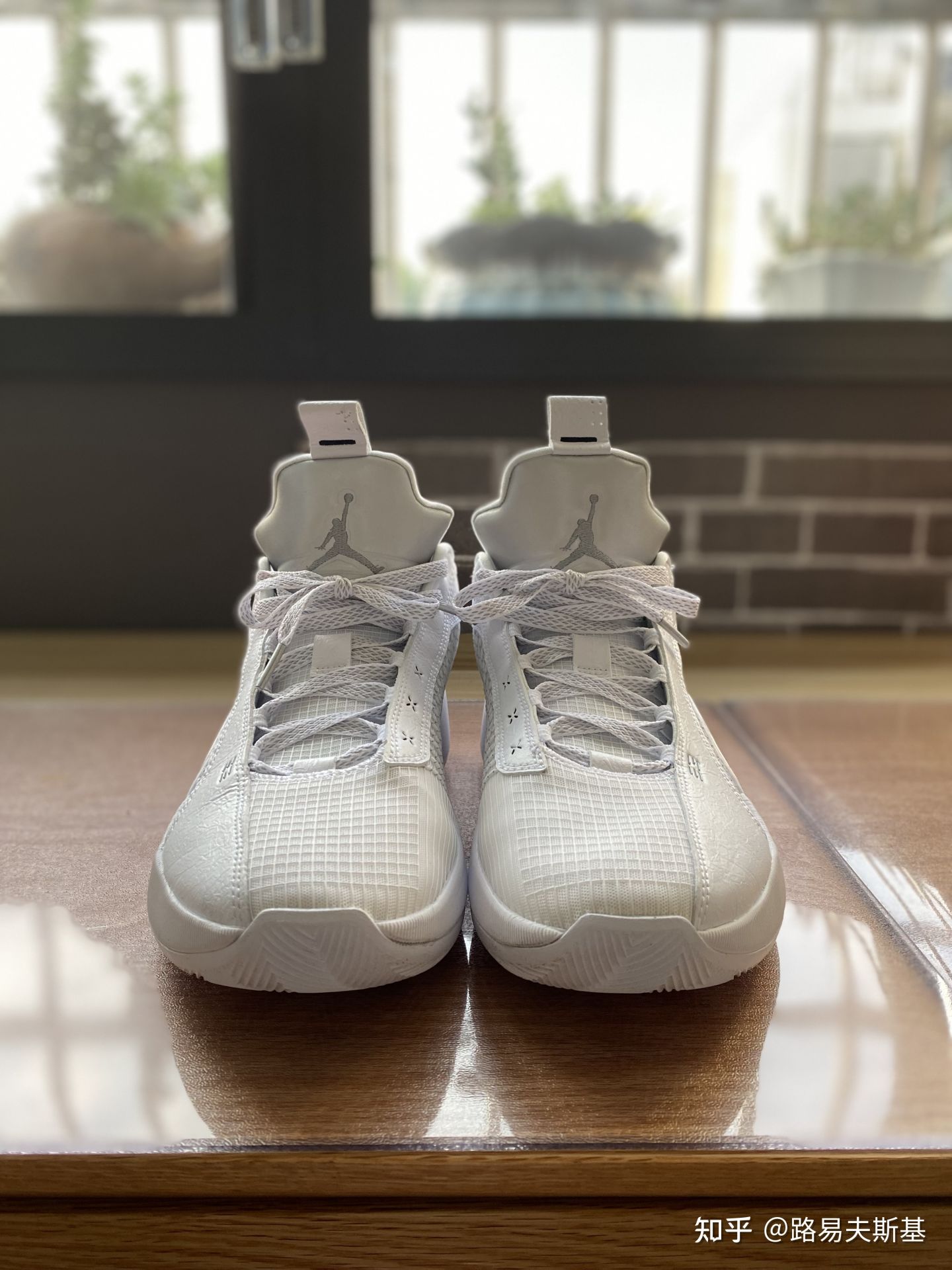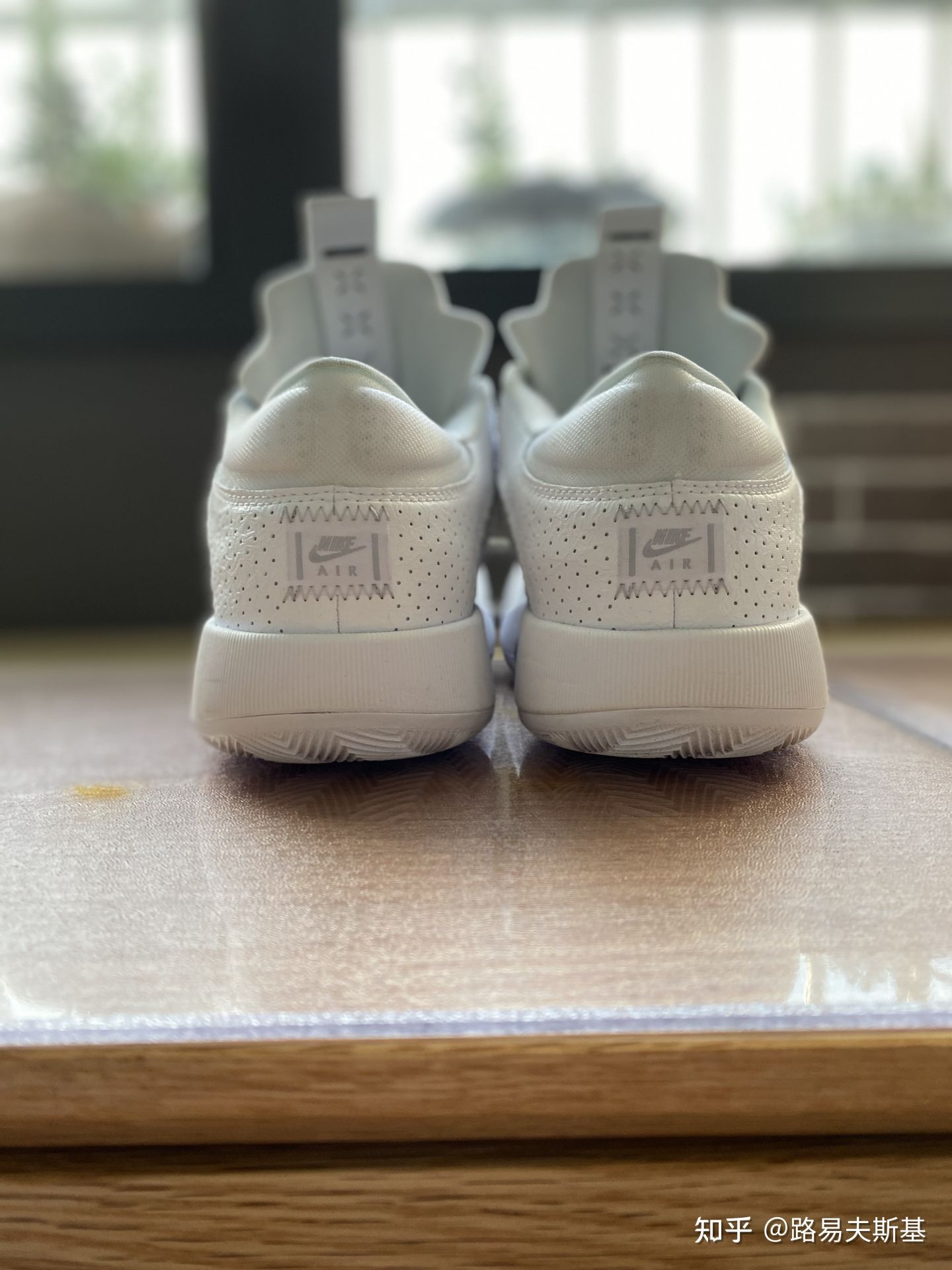Want a pair of brilliant sneaker with outstanding or eye-catching appearance? Well, if that’s what you’re all about, the odds are that you’re gonna find this AJ35 Low review after your own heart. Along with a few other pairs of sneakers, I’ve played hooping and shooting in these for quite a couple of months, maybe 6 months heretofore, on indoor hardwood mostly. At first when I got the shoes, I was rather electrified and did jam a few sessions on the concrete and blacktop, but shortly after that, I was dissuaded from doing that because of the relatively poor durability.
Here I wanna break down the shoes for a better perspective, hoping that you may find some helpful references and see whether these are born for you. So let’s not waste any more time and dive right into the core parts.

Vamp
How do the vamp materials perform on-court? Are they comfort-wise?
The AJ35 Low features leather splicing fabric all throughout the vamp. To be frank with you, I could not at first judge from the surface whether it wrapped well or not, but my experience later told me that the the vamp wrapping was quite good and impressive. To make it more explicit, let me put it this way.
While I was playing on court, the vamp materials moved really well with my feet. Since I am a bit of a wide footer, there’s no more room left for my toes and the last is neither too wide nor too narrow, just right to the point. With these I feel there’s plenty of forefoot flex upon each stride and my gait is nicely propelled forward. Over and above that, with the relatively thick and solid vamp materials, the foot containment is also solid for me and I never run into such issues as side movement or rolling out of the footbed.
As for the heel areas there’s also plenty of padding so that my feet sit rather comfortably inside the shoes. So I really can say that the overall lockdown the shoe provides is excellent. Comfort-wise, definitely!

Support
How much support does the vamp offer then?
In terms of the support, I can’t say that I have any major complaints of it. Since the vamp materials are hard enough, I can assured you that you’ll rarely find issues with security, as is the case for most of AJ shoes.
Whenever I stop suddenly or make lateral movement on court they always hold my feet well without letting my feet slip out of the footbed. While ensuring the possible maximum stability for players, these also keep them as quick and mobile as possible. Besides that, the lacing system works very well, though there’s nothing new about it, which surely offers a reliable sense of security.
In a word, there’s really nothing to complain about in this respect. A top-tier performance! No other way to put it.

Midsole
A large zoom sits in the forefoot area while a horseshoe-like zoom accompanies the heel portion. Not so impressive, definitely. But we all know it’s unwise to judge by appearance. So how does it perform on earth?
In fact, it did take me a couple of sessions to really start feeling this setup’s full potential. At first I could not even feel its existence, but after some time’s going on with it, I’d say the energy return properties it offers is really powerful and wonderful. During startup the feedback from the forefoot propels me forward quite forcefully so that I feel I’ve got somewhat addicted to such feelings.
The forefoot and midfoot areas both feel lower to the ground and faster. And along with the wonderful forefoot energy return, the overall heel-to-toe stride just feels ultra-smooth, which sounds very inviting, especially for those with explosiveness style.
As for the heel area, the zoom there cannot be felt obviously, and if you happen to be the type of player who play on the heels a lot and are also a lighter one, it may be a bit insufficient for use because you cannot even feel it there. But if you are a heavier player, you will then feel compression. Nevertheless, for me who weigh about 80kg, this is still far from my ideal and no match for Air cushion that is empowered with great potential.

For all that, I can’t say it is awful and lacks impact protection or absorption, just not so that satisfying as its forefoot counterpart.
Overall, if you look after a very responsive ride that’s low to the ground, ultra-stable, and agile and haven’t high requirements for heel cushion performance, this setup may turn out to be as good as you’re going to get.
Traction
Does it bite multiple surfaces well? How long will the outsoles last?
Nowadays its’ nothing new for sneakers to adopt herringbone pattern in their outsoles. But common as it is, I can’t deny its excellence. It actually comes up medially and laterally at the forefoot and heel area, offering the reliable bite in as many directions as possible, or accommodating quick changes of direction.
As is mentioned earlier, I’ve only played in it on outdoor courts for several times, in spite of the fact that I am a big advocate of outdoor playing. The reason behind this is that after several high-intensity plays, I found that there appeared some obvious damages in the high-use areas of my shoes. Since I value my shoes a great deal, such severe damages are definitely intolerable in my eyes and I had to turn to indoor smooth courts as a result.
Nevertheless, let me still talk a bit about its outdoor performance. Although its traction can still deal with abrasive surfaces, you cannot expect it to last very long. Rubber or concrete, if my memories serve me well, I barely had any issues with it and therefore never slid all over the place. It was always consistent, which I can ensure you.
What about the indoor performance then? Well, it seems like the outsole should still offer excellent traction just as it does outdoors. But, buddy, I hate to break it to you that the indoor performance is a bit inferior if you want the kind of god-like traction.
If , however, without comparison, I find the traction still more than satisfactory on indoor courts. On the hardwood floors mostly, the bite is just impressive and even a cynic cannot find fault with it. Nonetheless, when dust creeps into the pattern, that will be another story. With the dust or debris there, I obviously feel a decrease in responsiveness and the traction will therefore become inconsistent. The best way to make up for this is to wipe the outsoles off carefully, which will do great help. After all, we can’t afford to stop and wipe the outsole every few minutes on courts. That’s surely impractical.
On top of that, I feel the shoes are overall too stiff, and its anti-rollover and anti-torsion, on the other hand, are excellent because of this. However, there’s also a trade-off. The hard materials have also resulted in a little inflexibility, which makes the shoes very suitable for heavy guards.

Overall
The AJ 35 Low is an ultimate low-profile shoe for small and big forwards and heavy guards as well. Of the many AJ sneakers, I think this one is definitely an excellent one.
As for the widely complained problem, the arch area rising up a bit which causes discomfort to the foot, I have not encountered such a bane. But here it should be mentioned that for flat footers, it is best to try the shoes on so that such hassle or discomfort can be avoided.
Overall, this is a pair of good actual combat shoes, and as long as it suits you, it can be said as one of the best for you.